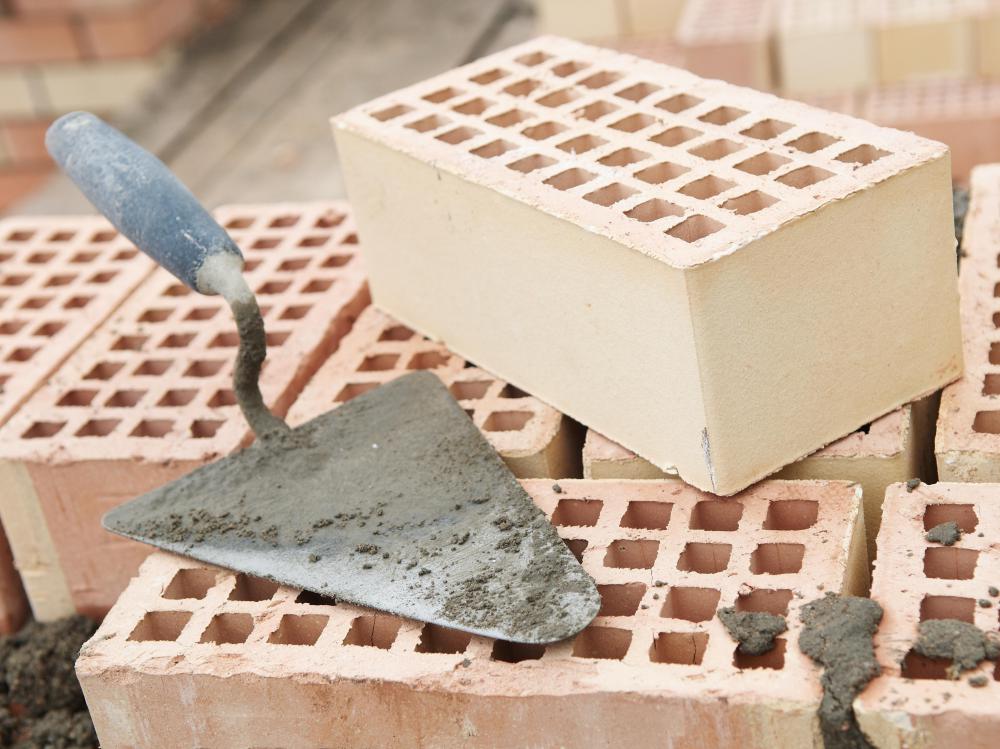At WiseGEEK, we're committed to delivering accurate, trustworthy information. Our expert-authored content is rigorously fact-checked and sourced from credible authorities. Discover how we uphold the highest standards in providing you with reliable knowledge.
What is Brick Waterproofing?
Though brick construction is considered quite resistant, extreme weather can have a negative effect over time. Brick waterproofing can help the material last as long as possible by keeping out moisture. Both a building with brick veneer and a solid brick structure can benefit from waterproofing.
Most sealants are made with siloxane, which chemically bonds to the material and prevents water from passing through it. This type of brick waterproofing sealant is clear, so it does not change the appearance of the building. In fact, rather than staying on the surface of the structure, brick sealant penetrates the material. It will need to be reapplied to older brick structures about every four to seven years, and newer buildings approximately every five to ten years.

A benefit of brick sealant is that, while it does not allow liquid moisture to seep through to the material, it does allow vapor to escape from the bricks. Considering that all buildings contain some moisture within the materials that needs to be let out, this is convenient. Brick waterproofing is also helpful in resisting the accumulation of dirt, so keeping a building looking as new and clean as possible can be increased by using brick sealant.

One major issue that brick sealing can help avoid is efflorescence, which is white staining often observed on brick construction. This is caused by the buildup of salts in the brick. The moisture inside each brick begins to dissolve the salt, and when the water evaporates, the salts are visible on the surface. Avoiding the white staining that occurs as a result is possible with brick waterproofing.
Spalling is another potential problem with brick construction. It occurs when the brick begins to flake due to water freezing within it. This causes expansion and eventual flaking. Sealants made with silicone, epoxy, polyester, or acrylic materials typically do not prevent spalling, while the kind made of siloxane does.
Although brick waterproofing products usually last years, the sealant will likely have to be reapplied several times throughout the life of the building. Sticking to the suggestions of when to apply brick sealant depending on the age of the building is a good idea, but those in extreme climates will likely need to reapply more often. Just like any other waterproofed product, when water no longer beads upon contact with the brick, it is time to reseal.
AS FEATURED ON:
AS FEATURED ON:












Discussion Comments
Is the brick more susceptible to weather damage or does the mortar fail in most cases? The weak link in brick construction may well be the mortar that holds everything together. That being the case, are most waterproofing attempts aimed at bricks or mortar? Does mortar have to be "touched up" from time to time to preserve the integrity of a brick structure?
Of course, it might be that the bricks themselves are more touchy about weather than mortar is.
Post your comments